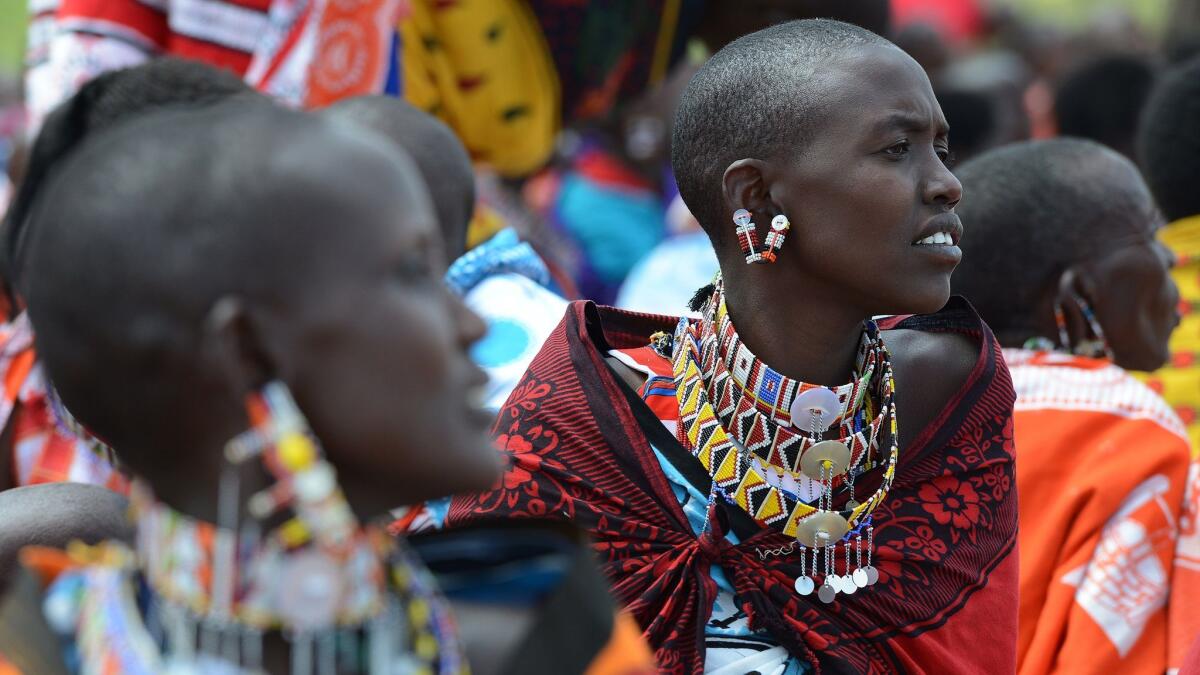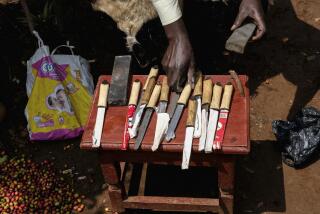The practice of female genital mutilation appears to be on the decline in many countries, surveys show

- Share via
The practice of female genital mutilation appears to be on the decline in a number of countries, according to recent surveys, a sign that years of advocacy work may be paying off.
But while the percentage of girls being cut is lower than in previous generations — significantly so in some countries — the overall number subjected to the ritual is higher because of population growth, a new study found.
Analysts at the Population Reference Bureau, a nonprofit research organization in Washington, studied the results of health and demographic surveys carried out in 29 of the 30 countries where the practice is most common.
The surveys aren’t done every year. But of the 16 countries that reported new data since 2014, 12 said that the percentage of women and girls between the ages of 15 and 49 who were forced to undergo the procedure had declined since surveys carried out between 2003 and 2011.
“This is a tremendously harmful practice, so the fact that we’re seeing declines in prevalence in three-quarters of the countries where we have updated data available is a really, really promising sign,” said Elizabeth Leahy Madsen, who co-authored the study.
In 2014, the share of countries reporting declines stood at 58%.
Researchers attribute the progress to the concerted efforts of governments and aid groups to combat the risky practice. Most of the countries studied had enacted laws or decrees prohibiting the cutting of a girl’s genitalia for non-medical reasons.
Urbanization and the increasing rates of education among women could also be factors.
Girls who lived in urban areas and whose mothers received even small amounts of schooling were less likely to be cut, Madsen said. The family’s wealth or religion did not appear to have a bearing on these decisions.
Female genital mutilation — which supporters call “female circumcision” — remains a deeply embedded practice in some cultures, where it is seen as an important coming-of-age ritual that ensures a woman’s purity. Without it, a woman may not be able to marry.
The World Health Organization estimates that at least 200 million women and girls have had their external genitalia partially or fully removed in parts of Africa, the Middle East and Asia.
The procedure can cause severe bleeding, problems urinating and recurring cysts and infections. It also increases the risk of complications in childbirth, and in the most extreme form may create a need for later surgeries to allow for sexual intercourse and childbirth.
The prevalence of female genital mutilation varies significantly both between and within countries. In parts of Yemen and Chad, for example, the rate exceeds 75% but is below 25% elsewhere in the countries.
Some of the most notable change was observed in countries where the practice is most widespread.
In Burkina Faso, nearly 90% of women in their 40s were forced to undergo the procedure, typically before they turned 5, the study found. But just 14% of girls aged between 5 and 9 had been cut.
Girls in that age group are not likely to experience cutting moving forward,” Madsen said. “That means that that really low prevalence rate is likely to stay, even as they age up.”
In other countries, however, change has been slower. In Mali, 77% of girls aged between 5 and 9 had been cut, compared with more than 90% of women in their 40s.
Despite changing opinions about the practice in many countries, the number of women and girls who undergo ritual cutting continues to grow because populations are growing, Madsen said.
In Ethiopia, the number of women aged 15 to 49 who were cut increased from 12.7 million in 2005 to 16.3 million in 2016, even though the prevalence rate of the practice declined from 74% to 65%.
Twitter: @alexzavis
More to Read
Sign up for Essential California
The most important California stories and recommendations in your inbox every morning.
You may occasionally receive promotional content from the Los Angeles Times.











